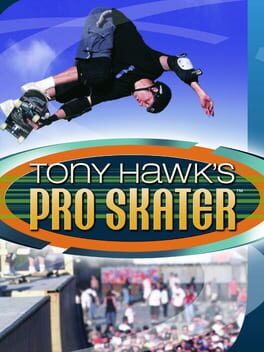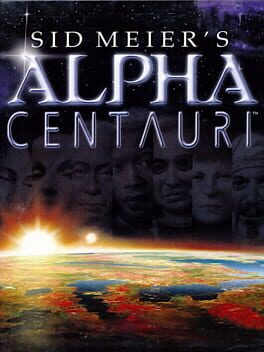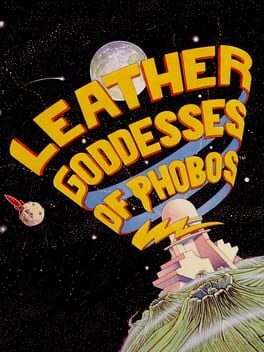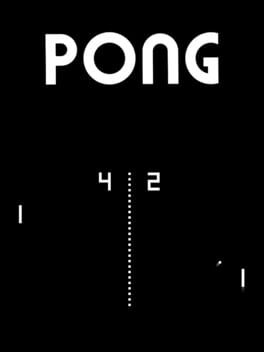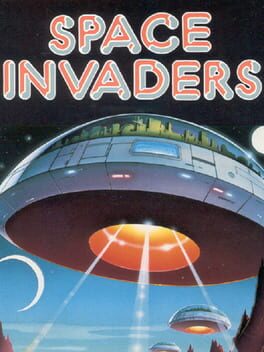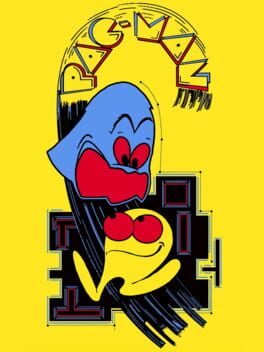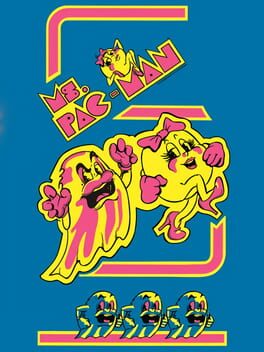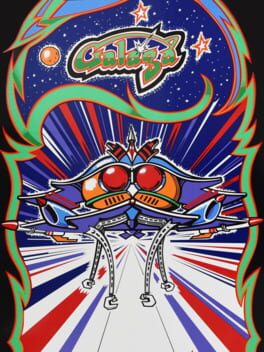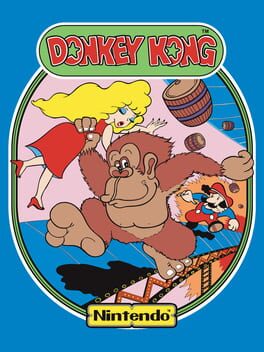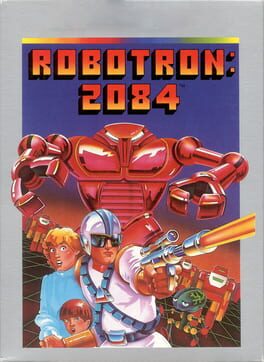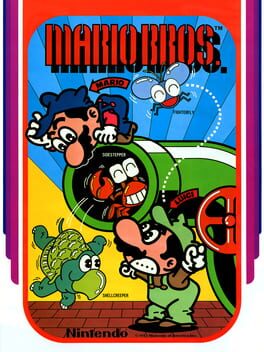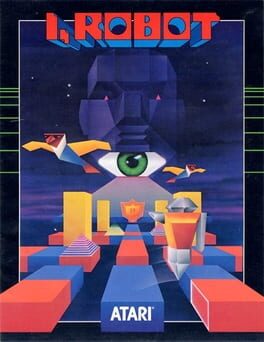Clownboss
Played this on the Dreamcast and I swear THPS1 changed the course of history. On its own it's a really fun game, with air-tight mechanics that finally brought the momentum and flexibility of skateboarding to video games, after many failed attempts. But also THPS1 more than any other video game liberated many young minds and taught them to skate and be defiant to authority. The fun of the game embraces the outlaw nature of skateboarding, involving everything from tresspassing to prohibited spots like malls to actually busting cop cars, all to a tastefully picked soundtrack(the theme song is "Police Truck" by Dead Kennedys for god sakes). This can all feel like very milquetoast messaging coming from a multi-million publisher who today is notorious for their exploitative business practices and tax dodging, but this message lives on. It isn't so much a video game as is a poignant view into an entire philosophy. It's the real shit.
It would be outdone by future and better games for its inclusion of tricks but THPS1 has all the basics you could possibly need. If you grew up on PC versions of the THPS games as I did, then you'll feel right at home with the Dreamcast port which avoids both the short draw-distance of the PSX version, and the low fidelity of the N64.
It would be outdone by future and better games for its inclusion of tricks but THPS1 has all the basics you could possibly need. If you grew up on PC versions of the THPS games as I did, then you'll feel right at home with the Dreamcast port which avoids both the short draw-distance of the PSX version, and the low fidelity of the N64.
A sort of the sequel to Civilization 2, SMAC is the most beautiful science fiction story I've ever seen. Not to be taken lightly, Alpha Centauri deals with heavy existential themes on essence of being, technology, the best way to lead society, and the way you lead your colonists has a gamut of awesome and terrifying power: You can construct anything from the worst technological dystopia to a utopia where all untold human suffering has been worth it, with flavour text and lore being backed by believable precedents and roots in real physics and biology.
For a canonical playthrough and the best first impression, play as Gaia's Stepdaughters, and shoot for Transcendence Victory. Let it envelop you entirely.
For a canonical playthrough and the best first impression, play as Gaia's Stepdaughters, and shoot for Transcendence Victory. Let it envelop you entirely.
2022
Have you played Half-Life? Of course you did, every trans person has played Half-Life and this is Half-Life that is TRANS and GAY. And in quick five minutes you spiral yourself into a short-of-breath Quake pastiche that's over just when it gets good. That there are so many graphical assets put in to furnish the environments is astounding.
1986
Zelda 1's controls are so simple, laic and functional, and most of all help being immersive in such a large, uncompromising yet characterised overworld. It's a difficult game throughout but in the vain of classical role-playing games it allows you to change your play styles and try alternate routes and get buffed up to make your life easier.
Back then, this game meant something completely else: It was expected from schoolchildren to communicate and together find secrets and exchange advice for beating the game - and as an experiment it worked, although for today's audience and especially the one who is only casually into gaming or doesn't have much time on their hands, it is absolutely inane. Although surprisingly it's servicable and manageable to beat it without a walkthrough(you might only need to consult guides once or twice to know which secret passages to open), it is such a joy to play it with a walkthrough. I got to play the FDS version so I enjoyed the extra depth on the music and sound.
One day I need to return to this and play the Second Quest, and that will be when whichever NES emulator first gets the microphone function.
I will add this: Zelda 1 is FAR more easier to traverse and figure out than any other adventure game or RPG of this era. If people are complaining that this is unsolveable, just what will they think when they play any of the Infocom or Sierra adventure games, The Tower of Druaga, Castlevania II, or any Ultima game? The fact this game made certain conventions easier to manage and much simpler(for example, you don't have to "equip" your sword, but you just have it outright, and you have plenty of opportunities to easily heal) is another one of this game's innovations, as hard as it is to believe. Can't say the same for this game's only NES sequel, though.
(Glitchwave project #015)
Back then, this game meant something completely else: It was expected from schoolchildren to communicate and together find secrets and exchange advice for beating the game - and as an experiment it worked, although for today's audience and especially the one who is only casually into gaming or doesn't have much time on their hands, it is absolutely inane. Although surprisingly it's servicable and manageable to beat it without a walkthrough(you might only need to consult guides once or twice to know which secret passages to open), it is such a joy to play it with a walkthrough. I got to play the FDS version so I enjoyed the extra depth on the music and sound.
One day I need to return to this and play the Second Quest, and that will be when whichever NES emulator first gets the microphone function.
I will add this: Zelda 1 is FAR more easier to traverse and figure out than any other adventure game or RPG of this era. If people are complaining that this is unsolveable, just what will they think when they play any of the Infocom or Sierra adventure games, The Tower of Druaga, Castlevania II, or any Ultima game? The fact this game made certain conventions easier to manage and much simpler(for example, you don't have to "equip" your sword, but you just have it outright, and you have plenty of opportunities to easily heal) is another one of this game's innovations, as hard as it is to believe. Can't say the same for this game's only NES sequel, though.
(Glitchwave project #015)
Steve Meretzky wrote this one, the legend who brought us "The Hitchhiker's Guide to the Galaxy" and "A Mind Forever Voyaging", two of the best Infocom games so I thought this was gonna be a stone-cold classic too, but I was really just disappointed. This game purported itself to be shocking and sexy but really it isn't nearly as lewd as people are lead to believe even with the max setting. The most you get is a couple of innuendo descriptors of your surroundings(like when you're riding on a horse it's described as "hard" and "thrusting"), and only two genuine sex scenes, which are really lacking in any sensual descriptions and where no orgasm is mentioned. It never actually says anything and it's so boring.
And the adventure itself isn't some kind of horny kink adventure where you're surrounded by sexy alien ladies in fetish gear who tie you up, but you're replete with genuine physical hazards and have to traverse environments such as jungles with carnivorous plants, deserts and arctic areas and castles and stuff. It's full of fantastical "leaps of logic" puzzles that I think got boring since "Trinity", and Leather Goddesses is basically just "Trinity" except it's pretending to be horny when it actually isn't, and lacking its interesting historical setting it's revolving around.
Special props that you actually get to choose your gender at the start. The only way I could stomach this adventure was to play as a woman character. Is it easy to die in this game? You bet.
And the adventure itself isn't some kind of horny kink adventure where you're surrounded by sexy alien ladies in fetish gear who tie you up, but you're replete with genuine physical hazards and have to traverse environments such as jungles with carnivorous plants, deserts and arctic areas and castles and stuff. It's full of fantastical "leaps of logic" puzzles that I think got boring since "Trinity", and Leather Goddesses is basically just "Trinity" except it's pretending to be horny when it actually isn't, and lacking its interesting historical setting it's revolving around.
Special props that you actually get to choose your gender at the start. The only way I could stomach this adventure was to play as a woman character. Is it easy to die in this game? You bet.
Good Golly Miss Molly, this was excrutiating. Zelda II's reputation preceeds itself and if you fall into it blindly knowing only the parlance of other Zeldas, you'll immediately be thrown towards ruthless enemies and introductory segments that just make no sense: To get to the first dungeon you're meant to go through caverns with no immediate source of light(as said by walking townsfolk), and you struggle immensely as you try to find this would-be light source without resorting to actually passing one of the caves, when in fact, you actually have to in order to find the damn candle. I feel like this one objective represents Zelda II in microcosm.
A lot has been written for the level of obtuseness that permeates old NES games, and the first Zelda wasn't stranger to it. Zelda 1 was a schoolyard game where kids were meant to exchange advice and collaborate on beating it(and also a game that's stoked by strategy guides provided by gaming mags), but even so its essential components were often telegraphed in some semblance, like spotting that one tree that looks weirdly alone, or bombing that blank spot that appeared in your explored portion of the dungeon map. It was a gaming equivalent of sentence completion, and with careful reasoning it was still a game that could be beaten without a walkthrough, which I can't say the same for Zelda II. Fortunately the dungeons themselves are really straightforward, but it's how you find these locales and get to these spots that's really deeply tucked and hidden(such as finding essential NPCs or items - or WHOLE CITIES by chance). The essential pathways to completion are barred without walkthroughs which is a big strike for me.
Even so this game would still be enjoyable without the immensely difficult foes you have to deal with. The combat and magic systems are both neat, but the way you utilise them are way too scarce for their own good. The most iconic combat move of the game, the downward thrust, can be gained at only about 60% inside the game, and way too many magic spells drain out on your resources that you're often left without juice for utilitarian spells. You're out of luck for the high jump and the fairy transformation spells, since you need to use magic to heal yourself constantly, and the screen nuke spell comes way too late and it's way too expensive for it to ever be useful. If you're meticulous, you can grind blobs inside dungeons to farm for magic points, but there are no clearcut grinding spots to make things easier like there was in Metroid, and you're essentially left eternally starving for both magic and health, as the low-health beeper works behind as a constant reminder of this hell you've entered.
The enemies are so relentless. Dark nuts will be your worst nightmare because you can't beat them through traditional means(immediately from dungeon 1), but have to resort to exploits such as jump-attacking that I don't think was the intention by the inexperienced developers who made this. I played Zelda II with the rewind system on and even then it drained me and made me lose lives cos sometimes I'd run out of magic at points where it was essential that I jump high or transform into a fairy. There are way too many bottomless pits that will nullify your entire progress and make the extra lives you pick up worthless, and it's too easy to fall into them. Zelda 1 didn't have bottomless pits or insta-kill obstacles like that. But in Zelda II you always have to be on edge, all the time, and you're not even safe in the villages you enter to heal all of the time.
In a weird way it's a really drowsy, barren world that's suitably apocalyptic. It follows on the story of Zelda 1 that didn't have much in line of settlements or NPCs either, and, as it's later been established, the two original Zelda games pick up in the "bad" timeline where Ganon had won. There's a certain amount of artistic aspiration in making the Zelda II world feel so hopeless and horrible, and that's the one thing the developers got correctly. Undergoing such tremendous difficulties, I guess it makes sense why so many players would eagerly headcanon the health-replenishing women as being the village whores. It's Zelda-meets-George R. R. Martin, and Nintendo says just too little enough that the player is miraculously allowed to place their own interpretation of this desolate, dark, mesmerising world.
Just why does the final palace have so many Egyptian and Babylonian motifs?
What is happening behind this and who is the entity calling for Ganon's return?
Just who is Shadow Link?
It's brilliant how none of these questions are ever really answered. It's truly a bleak, mysterious game that leaves the player searching for their own conclusions, and this is perhaps this game's strongest factor. It's so different. Way too different a Zelda for me than I'd like to be comfortable with, but I'm still very glad and fulfilled I managed to play and beat this.
Just please, do yourself a favour and either use the rewind function, or better yet - play the ROM hack called "Zelda 2 Redux". It does so much to rebalance the game and give the player a much fairer shake along with other quality improvements, and I think it's closer to the difficulty that Miyamoto himself would consider fair. You'll need all the help you can get with this.
(Glitchwave project #021)
A lot has been written for the level of obtuseness that permeates old NES games, and the first Zelda wasn't stranger to it. Zelda 1 was a schoolyard game where kids were meant to exchange advice and collaborate on beating it(and also a game that's stoked by strategy guides provided by gaming mags), but even so its essential components were often telegraphed in some semblance, like spotting that one tree that looks weirdly alone, or bombing that blank spot that appeared in your explored portion of the dungeon map. It was a gaming equivalent of sentence completion, and with careful reasoning it was still a game that could be beaten without a walkthrough, which I can't say the same for Zelda II. Fortunately the dungeons themselves are really straightforward, but it's how you find these locales and get to these spots that's really deeply tucked and hidden(such as finding essential NPCs or items - or WHOLE CITIES by chance). The essential pathways to completion are barred without walkthroughs which is a big strike for me.
Even so this game would still be enjoyable without the immensely difficult foes you have to deal with. The combat and magic systems are both neat, but the way you utilise them are way too scarce for their own good. The most iconic combat move of the game, the downward thrust, can be gained at only about 60% inside the game, and way too many magic spells drain out on your resources that you're often left without juice for utilitarian spells. You're out of luck for the high jump and the fairy transformation spells, since you need to use magic to heal yourself constantly, and the screen nuke spell comes way too late and it's way too expensive for it to ever be useful. If you're meticulous, you can grind blobs inside dungeons to farm for magic points, but there are no clearcut grinding spots to make things easier like there was in Metroid, and you're essentially left eternally starving for both magic and health, as the low-health beeper works behind as a constant reminder of this hell you've entered.
The enemies are so relentless. Dark nuts will be your worst nightmare because you can't beat them through traditional means(immediately from dungeon 1), but have to resort to exploits such as jump-attacking that I don't think was the intention by the inexperienced developers who made this. I played Zelda II with the rewind system on and even then it drained me and made me lose lives cos sometimes I'd run out of magic at points where it was essential that I jump high or transform into a fairy. There are way too many bottomless pits that will nullify your entire progress and make the extra lives you pick up worthless, and it's too easy to fall into them. Zelda 1 didn't have bottomless pits or insta-kill obstacles like that. But in Zelda II you always have to be on edge, all the time, and you're not even safe in the villages you enter to heal all of the time.
In a weird way it's a really drowsy, barren world that's suitably apocalyptic. It follows on the story of Zelda 1 that didn't have much in line of settlements or NPCs either, and, as it's later been established, the two original Zelda games pick up in the "bad" timeline where Ganon had won. There's a certain amount of artistic aspiration in making the Zelda II world feel so hopeless and horrible, and that's the one thing the developers got correctly. Undergoing such tremendous difficulties, I guess it makes sense why so many players would eagerly headcanon the health-replenishing women as being the village whores. It's Zelda-meets-George R. R. Martin, and Nintendo says just too little enough that the player is miraculously allowed to place their own interpretation of this desolate, dark, mesmerising world.
Just why does the final palace have so many Egyptian and Babylonian motifs?
What is happening behind this and who is the entity calling for Ganon's return?
Just who is Shadow Link?
It's brilliant how none of these questions are ever really answered. It's truly a bleak, mysterious game that leaves the player searching for their own conclusions, and this is perhaps this game's strongest factor. It's so different. Way too different a Zelda for me than I'd like to be comfortable with, but I'm still very glad and fulfilled I managed to play and beat this.
Just please, do yourself a favour and either use the rewind function, or better yet - play the ROM hack called "Zelda 2 Redux". It does so much to rebalance the game and give the player a much fairer shake along with other quality improvements, and I think it's closer to the difficulty that Miyamoto himself would consider fair. You'll need all the help you can get with this.
(Glitchwave project #021)
1972
It's just Pong. There's no intelligence to it, it's just an abstracted match of ping-pong suited for accessibility, but is a step above computer chess matches in the sense it's a dynamic action game with hit detection and an open invitation to engagement. It doesn't have an AI sadly, so the enjoyment you'll get from it(which still holds, BTW), is dependent from your friend playing. There's even a MAME variant out, so try it out for novelty reasons.
(Glitchwave project #001)
(Glitchwave project #001)
1978
PERSONAL BEST: 2650pts
This is a milestone in gaming, which captivated imaginations of many people: It tells of an interstellar war where you shoot lasers, but are also constantly under threat by the ever-hurrying alien invaders from all sides, and have to get rid of the enemies while keeping your head cool. The weighing of options in this game is a major source of fun, determining the pattern of how you'd annihilate the invaders, hiding behind diminishing barricades, and wondering if it's worth shooting for the bonus ships. Well famous for popularising arcade shoot em ups and space games, which would later spawn things like Galaxian and Galaga.
(Glitchwave project #002)
This is a milestone in gaming, which captivated imaginations of many people: It tells of an interstellar war where you shoot lasers, but are also constantly under threat by the ever-hurrying alien invaders from all sides, and have to get rid of the enemies while keeping your head cool. The weighing of options in this game is a major source of fun, determining the pattern of how you'd annihilate the invaders, hiding behind diminishing barricades, and wondering if it's worth shooting for the bonus ships. Well famous for popularising arcade shoot em ups and space games, which would later spawn things like Galaxian and Galaga.
(Glitchwave project #002)
1980
1982
PERSONAL BEST: 29,180pts
On a glance it just seems like the old Pac-Man but with changing mazes and a smarter AI(which I feel sometimes is too nuanced to notice). Certainly substantial differences, which makes this more focused and lived-in than the first Pac-Man, but is that enough for it to receive accolades? I can't tell.
That this game places a female protagonist is quaint, but it is such a predictable, corporate, Batwoman kind of move to make that I see its achievement as shallow. Then again, not a lot of male protagonists at this time were really stunning etiher.
(Glitchwave project #004)
On a glance it just seems like the old Pac-Man but with changing mazes and a smarter AI(which I feel sometimes is too nuanced to notice). Certainly substantial differences, which makes this more focused and lived-in than the first Pac-Man, but is that enough for it to receive accolades? I can't tell.
That this game places a female protagonist is quaint, but it is such a predictable, corporate, Batwoman kind of move to make that I see its achievement as shallow. Then again, not a lot of male protagonists at this time were really stunning etiher.
(Glitchwave project #004)
1981
PERSONAL BEST: 57,760pts
It perfected the Galaxian formula. What can I say? It just added some more complex flying patterns to spice things up a bit, adding bonus rounds, and the graphics are cute as always, but it's essentially Galaxian: The Update.
You HAVE to check out Gaplus if you want to see the next level.
(Glitchwave project #005)
It perfected the Galaxian formula. What can I say? It just added some more complex flying patterns to spice things up a bit, adding bonus rounds, and the graphics are cute as always, but it's essentially Galaxian: The Update.
You HAVE to check out Gaplus if you want to see the next level.
(Glitchwave project #005)
1981
PERSONAL BEST: 42,700pts (JP version)
And with this, platformers have become a thing, and Mario heralds it.
This game is also incredibly merciless on MAME. Play the MAME Japanese version! It always features all four stages in a cycle. The NES port is way easier, plus the arcade version adds in a level to spice things up a bit. It's really interesting how many standard platformer tropes has this game brought, from the casual use of ladders and platforms to jumping inbetween those, enemies with different patterns and power ups you need to use skillfully. Fantastic gameplay mechanics that still feel fresh to this day.
Atari 2600 port's profound blockiness makes its Donkey Kong far easier to categorise, and also disfunctional. Only two levels, too, the second of which feels like a laundry-list task with the flame monsters being incapable of climbing ladders. Colecovision is sweet and worthwhile if you can't play the NES port. The ZX Spectrum version is a coding wonder and a fairly competent rendition of the game that's worth playing, and it was probably how a lot of UK kids were first exposed to Mario. A real stunner has to be the Atari 800 port, which even further randomises barrel placement and also picks up the pace, it's a very unique port that makes the game feel different. It also retains all four levels!
The Intellivision one is pretty bad.
(Glitchwave project #006)
And with this, platformers have become a thing, and Mario heralds it.
This game is also incredibly merciless on MAME. Play the MAME Japanese version! It always features all four stages in a cycle. The NES port is way easier, plus the arcade version adds in a level to spice things up a bit. It's really interesting how many standard platformer tropes has this game brought, from the casual use of ladders and platforms to jumping inbetween those, enemies with different patterns and power ups you need to use skillfully. Fantastic gameplay mechanics that still feel fresh to this day.
Atari 2600 port's profound blockiness makes its Donkey Kong far easier to categorise, and also disfunctional. Only two levels, too, the second of which feels like a laundry-list task with the flame monsters being incapable of climbing ladders. Colecovision is sweet and worthwhile if you can't play the NES port. The ZX Spectrum version is a coding wonder and a fairly competent rendition of the game that's worth playing, and it was probably how a lot of UK kids were first exposed to Mario. A real stunner has to be the Atari 800 port, which even further randomises barrel placement and also picks up the pace, it's a very unique port that makes the game feel different. It also retains all four levels!
The Intellivision one is pretty bad.
(Glitchwave project #006)
1982
PERSONAL BEST: 140,600pts (Blue label version)
Man, this is a depressing game. It doesn't help that you have to save the last remaining human family(and fail since you can only get a game over at this arcade), doomed to extinction, but it's also so hyper, so brain-twisting, so brutal, with exploding noises and flashes everywhere it makes you weary of this robotic bloodshed and just want to give up. What is your cause? What are you fighting for? Violence is not the answer. Only despair is left.
As an action game though it's a treaded formula(Berzerk did this style of gameplay earlier) but the idea of providing a twin stick action is a revolutionary one and it provides immediacy.
(Glitchwave project #007)
Man, this is a depressing game. It doesn't help that you have to save the last remaining human family(and fail since you can only get a game over at this arcade), doomed to extinction, but it's also so hyper, so brain-twisting, so brutal, with exploding noises and flashes everywhere it makes you weary of this robotic bloodshed and just want to give up. What is your cause? What are you fighting for? Violence is not the answer. Only despair is left.
As an action game though it's a treaded formula(Berzerk did this style of gameplay earlier) but the idea of providing a twin stick action is a revolutionary one and it provides immediacy.
(Glitchwave project #007)
1983
PERSONAL BEST: 58,160pts (JP version)
No jumping on the Koopas!
The first Mario Bros. is an extension of "Joust", complete with the sloppy, oversensitive controls. You kill enemies by jumping from below and then walking across them, and an all-too-rare but useful POW block. It's way better when it's played competitively so you can quarrel with which Mario brother is better. It's too rudimentary of a game for its position.
As is traditional, the NES port is easier compared to the arcade version. Atari 5200 is okay, but, boring.
(Glitchwave project #008)
No jumping on the Koopas!
The first Mario Bros. is an extension of "Joust", complete with the sloppy, oversensitive controls. You kill enemies by jumping from below and then walking across them, and an all-too-rare but useful POW block. It's way better when it's played competitively so you can quarrel with which Mario brother is better. It's too rudimentary of a game for its position.
As is traditional, the NES port is easier compared to the arcade version. Atari 5200 is okay, but, boring.
(Glitchwave project #008)
1984
PERSONAL BEST: 58,218pts
Oh, what a technological marvel is I, Robot! It's a hodgepodge of lateral sci-fi influences like Asimov and Orwell that really has nothing to do with their stories other than set a generic backdrop of playing a robot, but that's not what matters here. It's hardly that a three-dimensional arcade game like this is concieveable, let alone that it lends itself to a simple gameplay that even today is accessible and hasn't aged one bit. If you imagine those 2D platformers like Miner 2049er, where the objective is to cover every platforming surface, this game is it but done in beautiful 3D spacing and with simple enemy patterns who you can also shoot to death. The game tanked back then because people didn't get the hang of the 3D spaciness, but playing it today is surprisingly compatible with the 3D game systems most people have become acquainted with today.
Each level you have to cover all red surfaces and turn them into blue, and after which there always comes another section that are Galaga style shoot-outs, except your focus is to dodge obstacles more than anything. Every third level you encounter a boss battle, which is another gauntlet where your goal is simply to run to the end of the course and endure. It's this system of levels that goes unchanged for some time, and after about 26 levels, they start to repeat, only with changing colour schemes and enemy patterns.
I Robot is a bonafide classic and an essential part of the gaming canon and history that needs to be republished in some form, like in a compilation, or in an online service.
It also has a hilarious "doodle mode", where you can essentially finger-paint with game models and polygons. You know, if you feel like it.
(Glitchwave project #009)
Oh, what a technological marvel is I, Robot! It's a hodgepodge of lateral sci-fi influences like Asimov and Orwell that really has nothing to do with their stories other than set a generic backdrop of playing a robot, but that's not what matters here. It's hardly that a three-dimensional arcade game like this is concieveable, let alone that it lends itself to a simple gameplay that even today is accessible and hasn't aged one bit. If you imagine those 2D platformers like Miner 2049er, where the objective is to cover every platforming surface, this game is it but done in beautiful 3D spacing and with simple enemy patterns who you can also shoot to death. The game tanked back then because people didn't get the hang of the 3D spaciness, but playing it today is surprisingly compatible with the 3D game systems most people have become acquainted with today.
Each level you have to cover all red surfaces and turn them into blue, and after which there always comes another section that are Galaga style shoot-outs, except your focus is to dodge obstacles more than anything. Every third level you encounter a boss battle, which is another gauntlet where your goal is simply to run to the end of the course and endure. It's this system of levels that goes unchanged for some time, and after about 26 levels, they start to repeat, only with changing colour schemes and enemy patterns.
I Robot is a bonafide classic and an essential part of the gaming canon and history that needs to be republished in some form, like in a compilation, or in an online service.
It also has a hilarious "doodle mode", where you can essentially finger-paint with game models and polygons. You know, if you feel like it.
(Glitchwave project #009)
